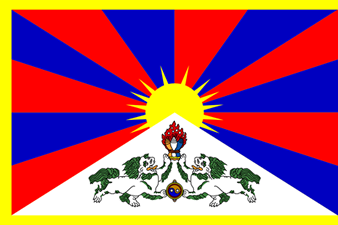
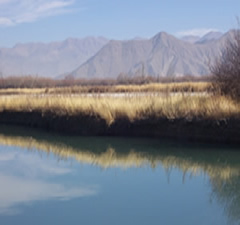
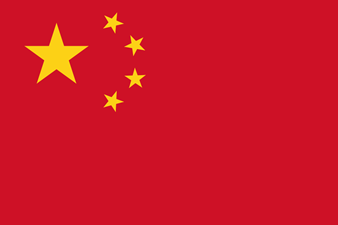
| ICE
Case Studies |
Environmental Degradation in the Tibetan Autonomous Region Patrick T. Hughes |
I.
Case Background |
 |
 |
 |
This project studies the Tibetan Autonomous Region (TAR),
a unique area of the world from a three-fold perspective. A comprehensive historical,
political, and environmental study is conducted and used to merge these three
interrelated topics into a broad based assessment of the current status of this
disputable Chinese province. The land that supports a nations people is a very
elementary, yet obviously important asset to the survival of the state. What
is distinctive about Tibet is that its people are controlled under the authority
of the People’s Republic of China (PRC). Therefore, the Tibetan people
do not have the exclusive power to influence the decisions that are made concerning
the management and preservation of its natural resources. A study of how the
PRC is administering the environmental doctrine of Tibet’s grasslands,
forests, water supply, minerals, wild life, and nuclear contamination is performed.
The evidence gathered leads one to believe that the governing of Tibet by the
People’s Republic of China (PRC) has been a significant contributor to
the decline of a Tibet’s natural resources.
2. Description
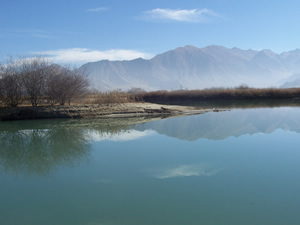 |
Environmental Degradation in the Tibetan Autonomous Region examines and intertwines the unique history of Tibet with the current political occupation by the People’s Republic of China (PRC) and discusses the resulting environmental impairment. | 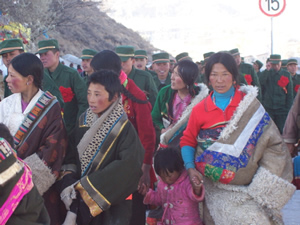 |
Political History
The People’s Republic of China has governed the Tibetan Autonomous Region
since 1959. Prior to the PRC taking charge of Tibet, it was an independent kingdom.
As is the case for much of South East Asia, the political history of the Tibetan
region is vast and expansive. There is considerable dispute as to when China
initially established claim on the region. The Tibetan government believes it
was independent dating back 700 years, until the Yuan Dynasty conquered it.
The Qing Dynasty subsequently defeated the Yuan dynasty in 1720. The understanding
by the Chinese government is that Tibet has long been incorporated as part of
China throughout the various dynasties, hence, they are historically part of
China. In1912 the Qing Dynasty fell and the people of Tibet proclaimed they
were a sovereign nation.(1) Tibet Between 1912 and 1951 Tibet
governed itself independent of China.
In 1949 the People Liberation Army (PLA) invaded Tibet and in May of 1950 a 17-point agreement was signed between Communist China and Tibet.(2) According to the Chinese this agreement was accepted by every Tibetan ethnic group, but, in reality discrimination and suppression of cultural practices prompted many eastern Tibetans to flee to the mountains of the west and engage in guerilla style warfare and thousands of other Tibetans fled to Lhasa to avoid persecution.(3)
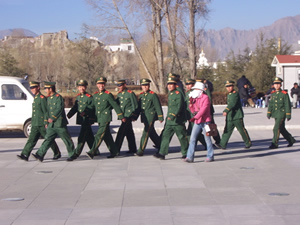 Five
years following the signing of the 17-point agreement the tensions that were
festering below the surface finally reached a boil and an all out Tibetan resistance
against the Chinese occupation ensued. The China Tibet was lasted from March
11, 1956 to March 22,1959 (1117 days). The Correlates of War website 40,000
deaths from the state (China) and 100,000 deaths cumulative.(4)
Five
years following the signing of the 17-point agreement the tensions that were
festering below the surface finally reached a boil and an all out Tibetan resistance
against the Chinese occupation ensued. The China Tibet was lasted from March
11, 1956 to March 22,1959 (1117 days). The Correlates of War website 40,000
deaths from the state (China) and 100,000 deaths cumulative.(4)
In March of 1959, fearing abduction by the Chinese the Dali Lama fled to India. An estimated 80,000 other Tibetans fled to neighboring countries of India, Nepal, Buhtan, and Sikkim.(5) Chinese Premiere Zhou Enlai on March 28, 1959 issued an Order of State Council and “dissolved” the Government of Tibet. (6)
In 1965 the PRC declared Tibet the Tibetan Autonomous Region (TAR).(7) Despite the declaration the people of Tibet are still seeking independence. Tibetans contend that the Chinese have unjustly colonized Tibet and continue to pursue self-determination. Between 1959 and the present some estimate that 1.2 million Tibetans have died by the hand of the Chinese.(8)
The Dalai Lama continues to lead the traditional government
in Tibet, but has been in exile at Dharamasala in Northern India since 1959.
The historical turbulence and influx of outside cultures is feared to be eroding
away the native culture and political systems of Tibet. Although many governments
are disturbed by the PRC’s occupation of Tibet, the PRC remains the recognized
authority of Tibet; no government recognizes the exiled government of the Dalai
Lama.(9)
Environment
There are a number issues surrounding the environment of Tibet. The priority issue of Tibetans is regaining their status as a sovereign nation. This is by far the most volatile topic concerning Tibet, one that has deep roots that extend through both the political and historical landscapes. Although the cause of the conflict cannot be directly attributed to the environment, it is the natural riches of the Tibetan region that make it an attractive portion of land for the Chinese to posses. Many argue that Tibet is an important region to China for two reasons: The first being the ability to access Tibet’s vast amount of natural resources. The second is to have a buffer of land separating China from possible western threats, possibly India. Hence, the conflict is indirectly attributed to the environment, however, the environment is a large segment of the conflict.
|
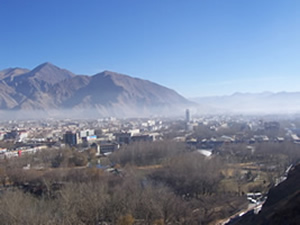 |
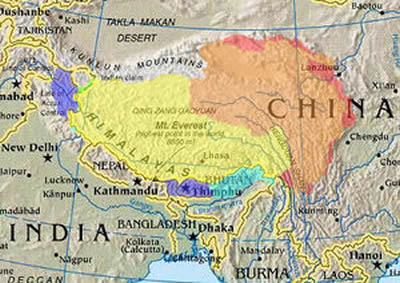 |
The location of the conflict is dependent upon your affiliation with the either the People’s Republic of China (PRC) or the exiled Government of Tibet. The Government of Tibet in Exile identifies the location of the conflict as a vast cultural area which formed the cultural identity for many centuries. This area is made up of the provinces of Amdo, Kham (Khams), U-Tsang. However, this area does not include areas outside the People Republic of China such as: Arunachal Pradesh, Sikkim, Bhutan, and Ladakh, areas that are deeply influenced by the Tibetan culture. Conversely, the PRC identifies Tibet as the Tibetan Autonomous Region (TAR), and is considered a provincial entity. The TAR includes Arunachal Pradesh (which is presently administered by India), Sikkim, Bhutan, and Ladakh, Amdo, Kham (Khams), U-Tsang. Amdo, Kham are now considered part of the PRC Provinces of Qinghai, Gansu, Yunnan, and Sichuan. |
|
| This map is courtesy of Wikipedia http://en.wikipedia.org/wiki/Tibet |
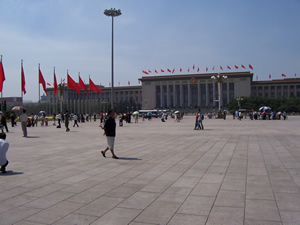 |
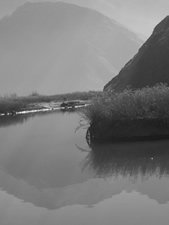 |
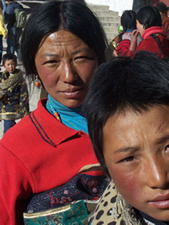 |

Situated on the roof of the world the Tibetan Plateau is the highest and largest plateau in the world. It is a vast expanse of land that rests at an average elevation of 13,000’ and stretches for almost 2.5 million sq. kilometers. To the south it is guarded by the Himalayan Mountain chain and to the north the Altyn Tagh and Gangkar Chogley Namgyal Mountains. Its western border merges with the Karakoram Mountains and to the east the Minyak Gangkar and Khawakarpo mountain ranges. The plateau is home to an expansive contrast of landscapes consisting of astral vistas in some parts of Southern Tibet to flourishing tropical forests in Eastern Tibet.(11) It is estimated that 70% of Tibet encompassed by rangeland and pasture and 1/10 of its surface area is forest and cropland.(12)
Grasslands
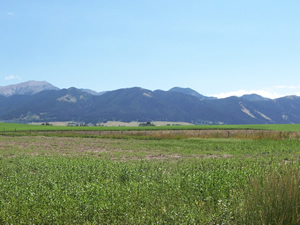 |
A December of 2005 article on the China Through a Lens website, a report released by the China Geological Survey Bureau tilted the Milestone Geological Survey, released less than pleasant news concerning the Tibetan Plateau. It stated that the desert area of the Tibetan Plateau has expanded to 0.5 million square kilometers. Additionally, the report stated that from the 1970’s to 2002 the total grassland area shrunk to 24.3% and the glacier area decreased 147.36 square kilometers each year.(13) As much as 70% of Tibet is covered in grassland, this natural resource sustains nearly 70 million animals.(14) Furthermore, upwards of a million herdsman utilize the expansive grasslands to forge out a living, tending to herds of dri, yak, sheep and goats.(15) |
|
The last four decades there has been a significant reduction in these pastures that sustain life and livelihood for both animals and people alike. The biggest injury to the land has been the conversion of marginal pastures into land for agriculture by Chinese settlers. Often resulting of desertification of the land---the land is no longer fit for grazing or agriculture.(16) This problem has been especially prominent in the vast grasslands of Amdo.
The practice of fencing in grasslands has made for significantly less area for Tibetan nomads to engage in their traditional migratory customs. For example, in the Machu district of Amdo, one-third of the area of over 10,000 square kilometer has been fenced for the horses, sheep and cattle of the Chinese army.(17) In similar fashion, a majority of the premium pastureland in Ngapa, Golok and "Qinghai" have been reserved for the Chinese.(18)
Forests
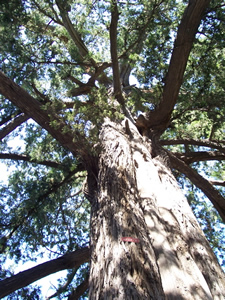 |
Over the past fifty plus years the Tibetan forests have been severely impacted. In 1949 there was 221,800 square kilometers of forest. By 1985 the forested area was reduced by nearly half, to 134,000 square kilometers.(19) It is reported that $54 billion in timber was removed during that time.(20) Many of the forests of TAR grow on steep, isolated slopes in the river valleys of Tibet's low-lying southeastern region. The most commonly found trees in these are the tropical montane and subtropical montane coniferous forest, with spruce, fir, pine, larch, cypress, birch, and oak.(21) The tree line stretches from 3,800 meters in the region's moist south to a towering 4,300 meters in the semi- dry north. Tibet's forests are/were old growth, and not uncommon to find trees 200 years of age. On average the stock density is 272 cubic ha/ha, and in U-Tsang the old growth areas reach 2,300 cubic ha/ha. This area accounts for the world's largest stock density of old growth conifers.(21) |
Deforestation and modern forest management methods not only alter the native landscape but also create a ripple effect of new problems. The removal—often times clear cutting--of over $50 billion in timber since 1959 by the PRC has substantially altered the forests of the Huangho, Yangtse, Mekong, Salween and Brahmaputra river valleys.(22) Consequentially, soil erosion, water siltation, habitat loss and climatic effects are the byproduct deforestation.. Hence, there is a potentially volatile future for the water supply of a better portion of Southeast Asia---which makes up nearly a quarter of the world’s population.(23)
Water Supply
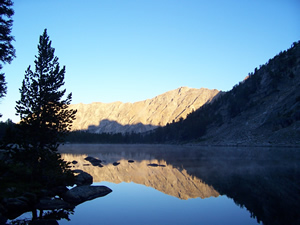 |
Tibet is one of Asia’s principle watersheds and China has plans to utilize this resource for numerous hydroelectric dams.(24) The electricity generated from Tibet’s rivers will be used to power the Chinese cities of Chengdu, Xining, Lanzhou and Xian.(25) One of the fiercest environmental issues in the recent history of Tibet wasa hydroelectric construction project on Yamdrok Tso, a sacred lake between Lhasa and Shigatse. Some were concerned this project could have been one of the largest environmental disasters of the latter portion of the twentith century. The project was completed in the early portion of the twenty-first century.(26) At one point during the construction of the hydroleclectric project, the PRC denied foreigers access to Yamdrock Tso. This was due to the large amount of adverse international attention surrounding the project. |
One amazing fact is the ninety per cent of TAR’s river run-off flows down across its borders out of Tibet, subsequently only 1% of this is used within Tibet.(27) As touched on earlier, due to the high levels of deforestation many of Tibet's rivers have developed extremely high sediment rates: The Machu (Huang Ho, or Yellow River), the Tsangpo (Brahmaputra), the Drichu (Yangtze), and the Senge Khabab (Indus) rank among the five most heavily-silted rivers in the world.(28) These rivers irrigate nearly 47% of the earth’s population, they stretch from the Machu basin in the east to the Senge Khabab to the west.(29)
An argument that is particularly noteworthy is that TAR is one of the world’s most optimum locations for solar electric power. Second to only the Sahara Desert with an estimated annual average of 200 kilocalorie/cm, yet the Chinese have set a path to continue to construct dams, which have a far greater impact on the environment.(30)
Minerals
 |
Another indicator of the importance
of TAR’s natural resources is that between 2000 and 2005 $22.3 billion
of minerals were prospected from Tibet. Tibet has a dynamic selection of
minerals and ranked first in China for 13 categories of minerals in terms
of net output. These minerals include: copper, chromium, boron, sulphur,
magnesite, corundum and muscovite. |
Furthermore, in 2001 China began to increase mining in Tibet, by aggressively pursuing the gold of TAR. In addition, Australian mining companies and the University of Tasmania are allowed by the PRC to play a large role in the mineral future of Chinese occupied Tibet, as they also look to prosper on the mineral wealth of the region.(31) The Tanjianshan gold deposit, which sets within the northern Tibet's Chokle Namgyal Mountain Range, it is said to hold as much as 41 tons of gold, with a possible value of $335 million.(32)
Nearly half of China's 15 key mineral reserves are expected to be depleted within he next ten years and major non-ferrous minerals are for all practical spent, China is rapidly moving in on Tibet in pursuit of minerals.(33) Measures to preserve the environment surrounding a mining area are vaguely acknowledged. Areas of particular concern are fragile terrains that often result from mining activity. The creation of fragile terrains can lead to slope destabilization, land degradation, and the opportunity to put human life in harms way.
Wild Life
 |
Within the Autonomous Region of Tibet there are 488 species of birds and 142 species of mammals. Moreover, there are 2,307 species of insects, 64 species of fish, 45 species of amphibians, and 55 species of reptiles. Of these there are 163 rare endangered and valuable species. These consist of 74 species of mammals and 79 species of birds, 4 reptiles, 2 fish, and 2 insects.(34) Aside from wildlife suffering from hardship due to the loss of habitat resulting from deforestation, polluted waterways, and grasslands slipping into desertification wildlife are also subject to poachers and sport hunters granted expensive licenses to pursue some TAR’s exotic creatures. For example, hunting tours are organized and licenses are granted by the PRC for affluent foreign big game hunters. These hunters are granted permission to pursue endangered species such as the Tibetan antelope and the Argali sheep, species that are supposed to be granted the highest level of official protection.(35) The hunts cost up to $35,000 for a Tibetan antelope, $23,000 for an Argali, $13,000 for a white-lipped deer, $7,900 for a blue sheep, and $3,500 for a red deer.(36) |
Nuclear Contamination
For several years it was suspected that the PRC was storing weapons and disposing of waste in TAR. In 1993 a Xinhua new report confirmed that there was 20 sq. meter dump for radioactive pollutants in Haibei Tibetan Autonomous Prefecture not far from the shores of Lake Kokonor, the largest lake on the Tibetan Plateau.(37)
The nuclear facility known as “Factory 211,” is said to be China’s premiere nuclear weapons facility. There is much concern that prior to the Xinhua news report, the PRC had been haphazardly disposing nuclear waste materials possibly as late as early as the late 1960s. The nuclear facility was decommissioned in 1987.(38)

The level of Dispute is relatively low. The PRC maintains control of the region. There has been a considerable amount of deaths attributed to the conflict over time; however, there is little military engagement between the two. The Tibetan people have vowed peaceful resistance, but many individuals have been subject to violence at the hands of the PRC as a result of their passive resistance.
1.2 million since 1959
The first data set I found is for the China/Tibetan War. This conflict lasted from 03/011/1956 until 03/22/1959 (1117 days). The data set listed 40,000 deaths by the State, which I will understand to be China. The data set then listed a total of 100, 000 deaths.(39) This was considered an Intra-state conflict. I understand the fatality totals to be military related. 100,000 deaths I understand to be 1(6) ratio on the logarithmic scale.The second set of data I found detailed 1.2 million deaths
due to the conflict between the Tibetan people and the People’s Republic
of China (PRC).(40) The source was not specific as to whether
the deaths were civilian or militarily related. It could however be assumed
that Tibetans killed were civilians because there has not been a formal declaration
of war or military conflict between the two. I do acknowledge that the deaths
attributed to the conflict between the PRC and Tibet cannot be in totality related
to an environmental conflict. The dispute between the two is largely an issue
of sovereignty. However, Tibet’s impeded access and ability to have autonomy
over the maintenance, preservation, and allocation of its natural resources
due to occupation by the PRC is a direct result of the conflict. I understand
the 1.2 million deaths to be a 1(7) ratio on the logarithmic scale.
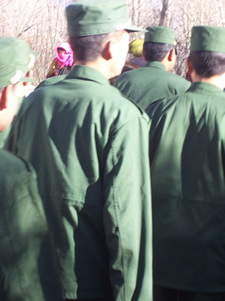 |
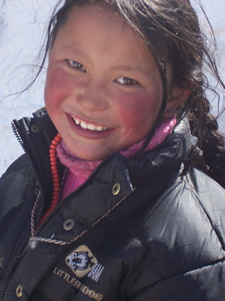 |
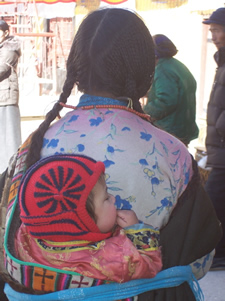 |

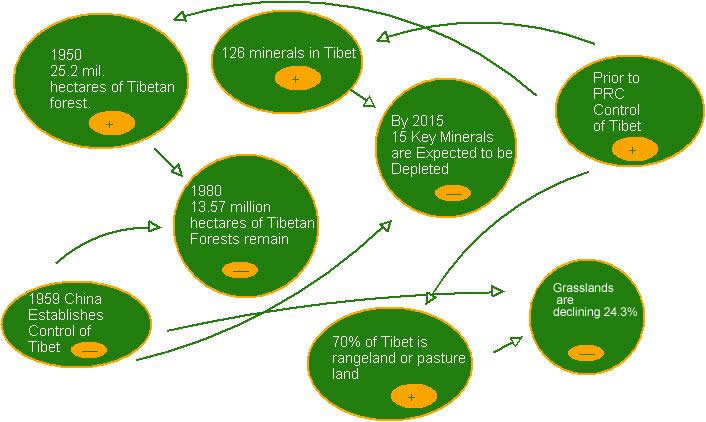 |
The
diagram on the left lists the positive environmental attributes of which
the TAR posseses. These are detailed with a (+) sign. The negative effect
of the PRC controlling TAR and its relationship to the down turn of the
environment is detailed with a (-) sign. |
The level of strategic interests for the PRC I would deem to be medium to relatively high. Although, Tibet is not yet an industrial area of China it does supply a vast amount of resources for the mainland of China. TAR also insulates China from the countries of India, Nepal, Burma and Bhutan. Militarily and strategically, China, having the proverbial roof of the world between them and their neighbors is a convenient buffer zone. With that being said, land amounts to in many cases a stockpile of untapped resources. Hence, Tibet is also a reserve of resources for the Peoples Republic of China to harvest.
For TAR strategically their level of interest is very high, it is land they consider their own. Without control of their land, they are unable to make decisions concerning the maintenance, conservation, and economic use of the resources. For both the PRC and TAR there are numerous reasons why both sides of this would deem the strategic interests of this issue to be relatively high.
As for now it could be said that China is winning the dispute. It is estimated that 1.2 million have been killed and thousands more jailed since the beginning of the Chinese occupation. The Tibetans do enjoy some autonomy, but ultimately they are under the rule of the People’s Republic of China. Essentially, Tibet is one of the last remaining indigenous places on earth. The Chinese occupation of Tibet can be accounted to the downward trend in the management and preservation of Tibet’s natural resources.

1.Wikipedia, “Tibet-Status,” http://en.wikipedia.org/wiki/Tibet,
accessed 04.09.06.
2.Free Tibet Campaign, “Communist Invasion 1949-1959,”
http://www.freetibet.org/info/facts/fact15.html, accessed 04.09.06.
3. Free Tibet Campaign.
4. Correlates of War, http://www.correlatessofwar.org/. accessed 2.20.06.
5. The Government of Tibet in Exile, “A National Uprising,”
http://www.tibet.com/WhitePaper/white3.html, accessed 04.09.06.
6. The Government of Tibet in Exile, Ibid.
7. Wikipedia, “Tibet-History,” http://en.wikipedia.org/wiki/Tibet,
(accessed 01.30.06)
8. Death Causes of Tibetan patriots,
http://www.buyhard.fsnet.co.uk/death_case_of_tibetan_patriots.htm, accessed
04.09.06.
9. Wikipedia, “Tibet-History”
10. Climate Special for Trip in Tibet, <http://en.tibet.cn/news/tin/t20051122_73152.htm>
accessed
2.21.06.
11. Tibet Environmental Watch-Reports-Archived, < http://www.tew.org/tibet2000/t2.ch1.biodiversity.html>
accessed 2.20.06
Tibet Environmental Watch-Reports-Archived,
< http://www.tew.org/tibet2000/t2.ch1.biodiversity.html> accessed 2.20.06.
12. Free Tibet Campaign-Wildlife and Land Use,
< http://www.freetibet.org/info/facts/fact10.html> accessed 2.20.06.
13. The Government of Tibet in Exile, “State of Tibet’s Environment,”
http://www.tibet.com/WhitePaper/white9.html, accessed 4.09.06.
14. The Government of Tibet in Exile.
15. The Governement of Tibet in Exile
16. The Government of Tibet in Exile.
17. The Government of Tibet in Exile.
18. The Government of Tibet in Exile.
19 . The Government of Tibet in Exile.
20. The Government of Tibet in Exile.
21. The Government of Tibet in Exile.
22.The Government of Tibet in Exile.
23. The Office of Tibet, New York, “The Environment-Hydro-Electric Construction
Projects,”
http://www.tibetoffice.org/en/index.php?url_channel_id=70&url_subchannel_id=&url_p
ublish_channel_id=196&well_id=2. Accessed 04.09.06.
24. The Office of Tibet, New York.
25. The Office of Tibet, New York.
26. The Government of Tibet in Exile.
27. The Government of Tibet in Exile.
28. The Government of Tibet in Exile.
29 . The Government of Tibet in Exile.
30. EN.Tibet.cn, “Tibet's mineral resources valued at US$22.3 bln,”
http://en.tibet.cn/news/tin/t20051207_76583.htm. accessed 04.09.06.
31. EN.Tibet.cn.
32. Tibet Environmental Watch-Development, “Chinese, Australian Eyes on
Tibet Mineral
Prospects,” http://www.tew.org.development/tibet.minerals.html. (March
22, 2001) accessed 04.09.06.
33. Tibet Environmental Watch-Development, “Chinese, Australian Eyes on
Tibet Mineral
Prospects,”
34. The Government of Tibet in Exile.
35. Free Tibet Campaign-Wildlife and Land Use.
36. The Government of Tibet in Exile.
37. The Government of Tibet in Exile.
38. The Government of Tibet in Exile, “China Admits to Nuclear Waste on
Tibetan Plateau,”
http://www.tibet.com/Eco/eco3.html, accessed 04.09.06.
The Government of Tibet in Exile. ““China Admits to Nuclear Waste
on Tibetan Plateau.”
39 . Correlates of War (COW).
40. Boycott China for Tibet, http://www.buyhard.fsnet.co.uk/death_case_of_tibetan_patriots.htm.
accessed 04.09.06.
Khmer
The Deforestation that was taking place in Khemer in the
1990s rivals that of the extensive deforestion in Tibet.
Diayou
The Diayou Islands dispute presents sovereignty and envrinmental
resource management issues that are similar to the TAR/PRC dispute.
Teak
The Teak case study presents timber management issues that are similar to the
TAR/PRC situation.
Burma
Pipe Line
The Burma Pipe Line case study addresses the exploitation of natural resources
and conflict that ensued. The issues that are addressed can be related to the
happenings in TAR/PRC conflict.
Mindanao
The Mindanao case study reflects a situation of rivaling interest in relation
to natural resources and the resulting economic diaparities. The events in this
conflict can be cross referenced to the events in the TAR/PRC conflict.

© Patrick Hughes 2006